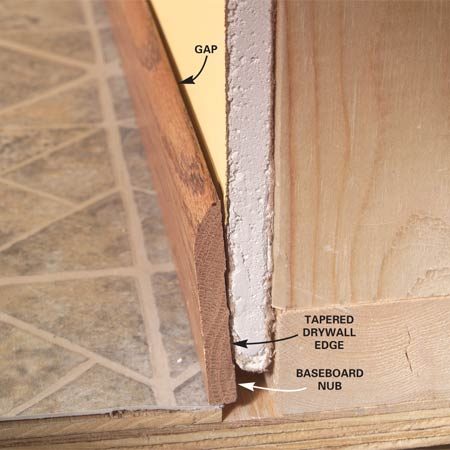Installing Cove Base Around Corners
Rubber baseboard can be a great alternative to traditional wooden baseboards in certain areas because it is great around wet areas and it resists scratches and scuffs. It also makes a fantastic choice for kitchens, bathroom and any area that has glued down carpet.
It helps protect the wall and gives the room a very finished look. Installing rubber baseboard is a very simple process that just takes a little bit of work to accomplish. Here are the basics of how to install rubber baseboard. Step 1- Measure the Area The first thing that you need to do in order to install rubber baseboard is to measure the area. You need to determine how much rubber baseboard to purchase for the area. Take your tape measure and measure around the perimeter of the room.
If you are just working in a rectangular room, all you need to do is measure around the outside walls. If you are in a room with cabinets, you should also measure the distances around the cabinets as well. You should add about 5 to 10% waste on top of the number that you come up with.
Rubber baseboard usually comes in 4 foot sticks or in longer rolls. Therefore, you will usually have to buy some waste to get what you need. Step 2- Prepare the Space Before you install the rubber baseboard, you need to make sure that the area is ready to work with. If you have old baseboards in place, you need to remove them. Scrape off any extra adhesive and try to get the space as clean and smooth as possible. Step 3- Apply the Adhesive Make sure that you have the right kind of adhesive for the job. Since rubber baseboard is also referred to as cove base, you may have to look for cove base adhesive. Discrete mathematics textbook.
It comes in a caulk tube and needs to be put in the caulk gun in order to apply it. Squeeze the caulk gun to apply some adhesive to the back of the rubber baseboard. Use a zig-zag pattern to apply the adhesive. Once the adhesive is on the back of the rubber baseboard, use a notched trowel to spread the adhesive out over the back.

This will ensure that the adhesive is distributed evenly and will stick to the wall the best. Step 4- Cutting the Baseboard When you need to make a cut, mark on the baseboard where it needs to be cut. Then lay the baseboard on a scrap piece of wood and use the square and utility knife to make a straight cut. Step 5- Working With Corners While walls are fairly simple, corners can be a little trickier.

Installing Cove Base Around Corners In House

Installing Rubber Cove Base
When you come to an inside corner, you need to install one piece all the way into the corner. Then take another piece, cut off the lip at the bottom and fit it directly up against the first piece. When you have an outside corner, like around cabinets, you will simply wrap it with the rubber baseboard.